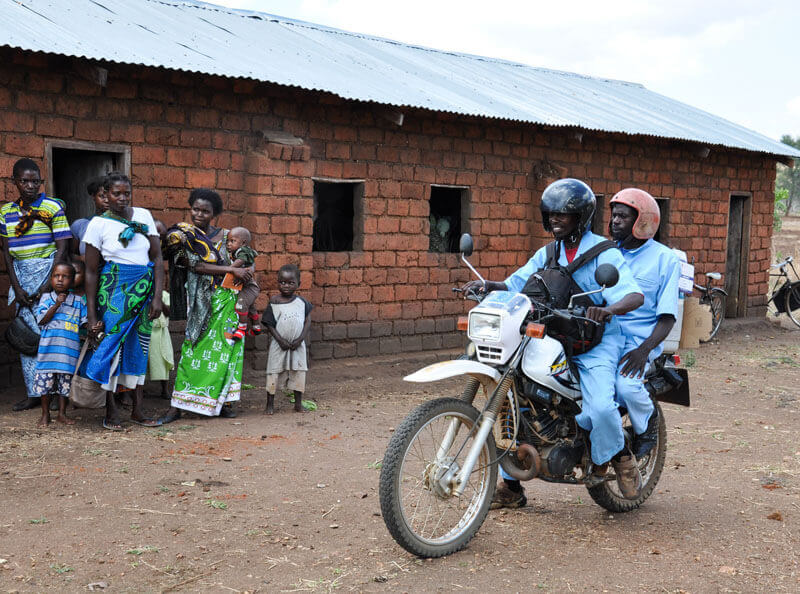Taylor CapizolaGHTC
Taylor Capizola is a program assistant at GHTC who supports GHTC's communications and member engagement activities.
In this regular feature on Breakthroughs, we highlight some of the most interesting reads in global health research from the past week.
 Two male health workers on a motorcycle carrying a vaccine carrier and supplies, pulling up in front of a building where women and children are waiting. (PATH/Doune Porter)A breakthrough leprosy vaccine candidate will soon enter a Phase I clinical trial. The vaccine—LepVax—is the first vaccine specifically developed for leprosy, marking a critical step forward in efforts to eradicate the disease. Leprosy is a painful bacterial disease that
causes nerve damage, skin disfiguration, and issues with mucous membranes. While treatment options exist, there are many side effects, and these treatments
are not capable of reversing the permanent skin and nerve damage. Early results from the trial should be available in 2018.
Two male health workers on a motorcycle carrying a vaccine carrier and supplies, pulling up in front of a building where women and children are waiting. (PATH/Doune Porter)A breakthrough leprosy vaccine candidate will soon enter a Phase I clinical trial. The vaccine—LepVax—is the first vaccine specifically developed for leprosy, marking a critical step forward in efforts to eradicate the disease. Leprosy is a painful bacterial disease that
causes nerve damage, skin disfiguration, and issues with mucous membranes. While treatment options exist, there are many side effects, and these treatments
are not capable of reversing the permanent skin and nerve damage. Early results from the trial should be available in 2018.
A massive cholera immunization campaign recently launched near the border of Bangladesh in an effort to provide emergency immunizations to host families and displaced Rohingya families and children. Over 200 mobile vaccination teams delivered 900,000 cholera vaccines to the border regions currently affected by both a cholera outbreak and a refugee crisis. A main target of the campaign is children ages one to five, though individuals of all ages will receive vaccines. This immunization campaign follows a recent global pledge to end cholera by 2030.
Results from a clinical trial launched in 2015 at the end of Liberia’s Ebola outbreak have demonstrated that two Ebola vaccine candidates are safe and effective in promoting an immune response. The first vaccine—ChAd3—developed by the National Institute of Allergy and Infectious Diseases and GlaxoSmithKline, resulted in an immune response in 64 percent of recipients one year-post vaccination, while the second vaccine—VSV-EBOV—developed by Merck and Canadian scientists resulted in an immune response in 80 percent of recipients at the one-year mark. These results will help inform continued development of both vaccines.